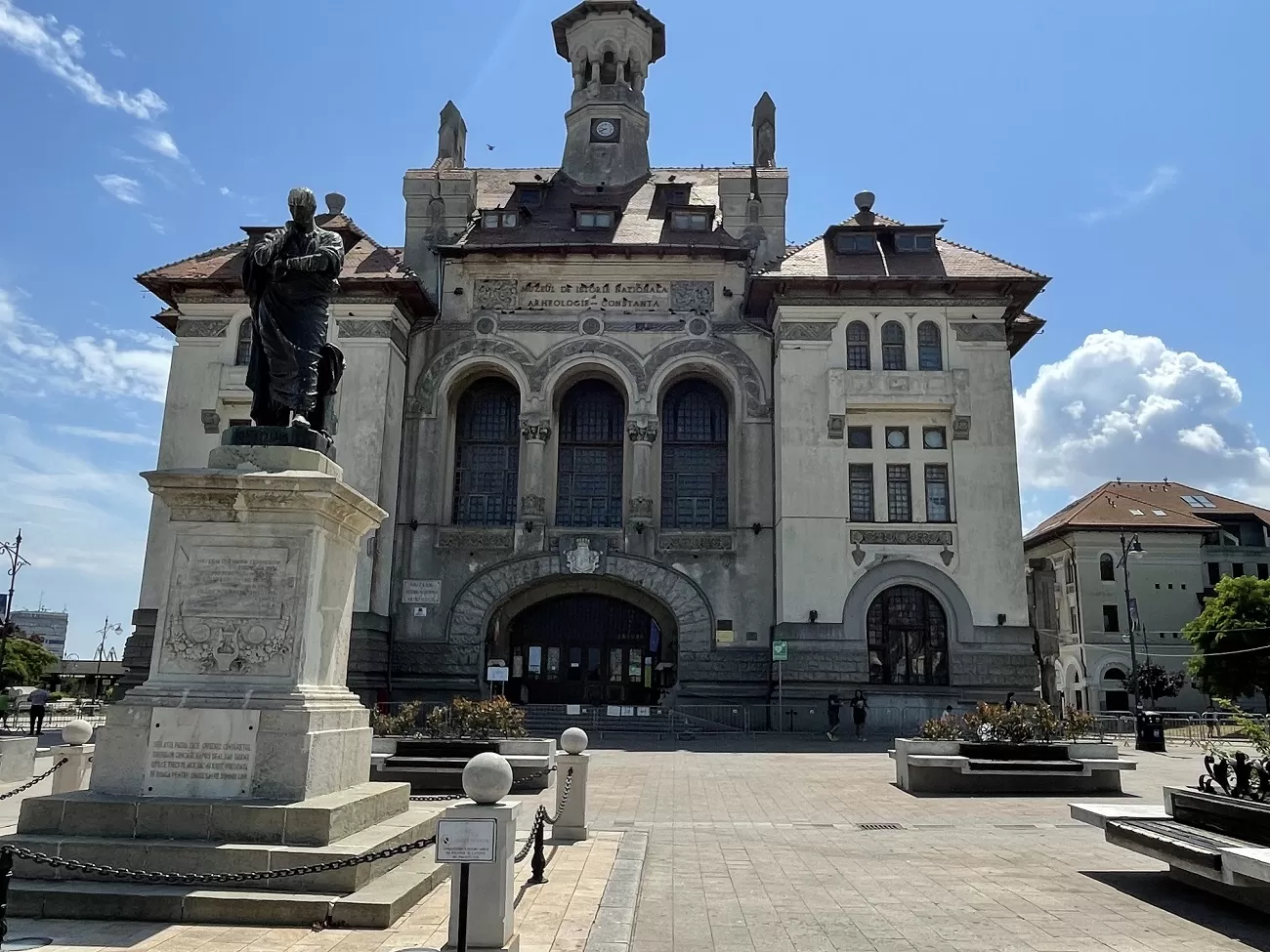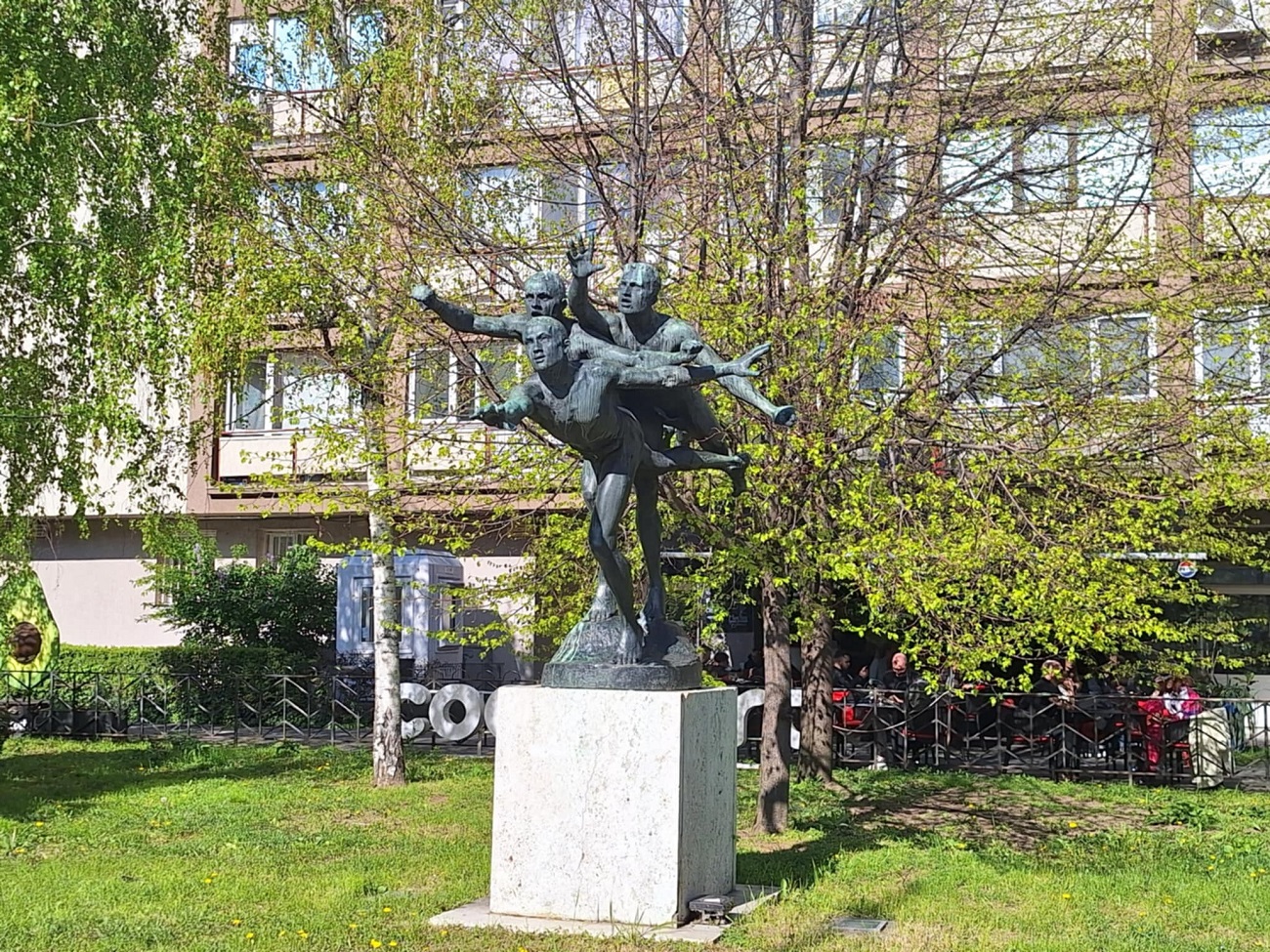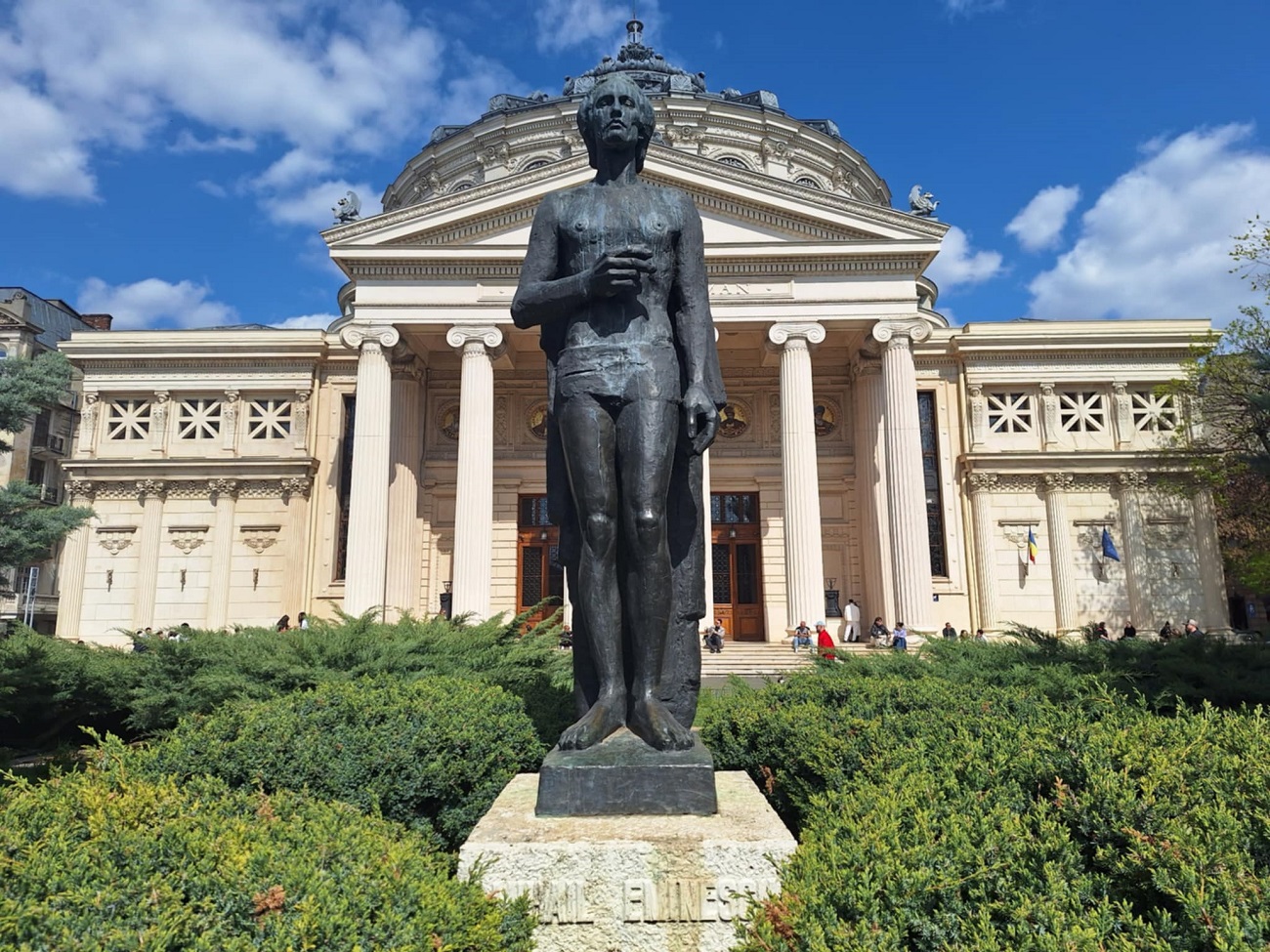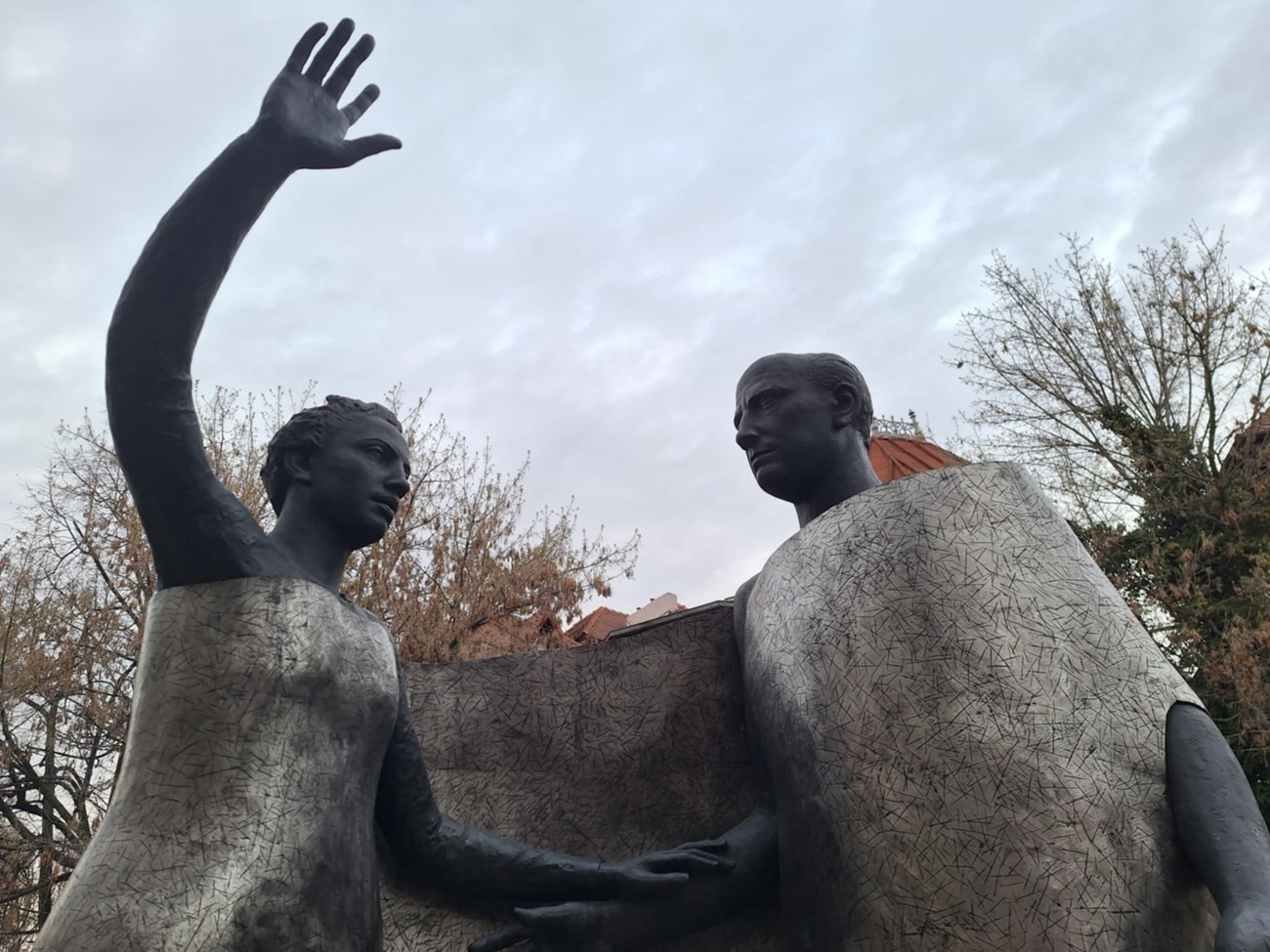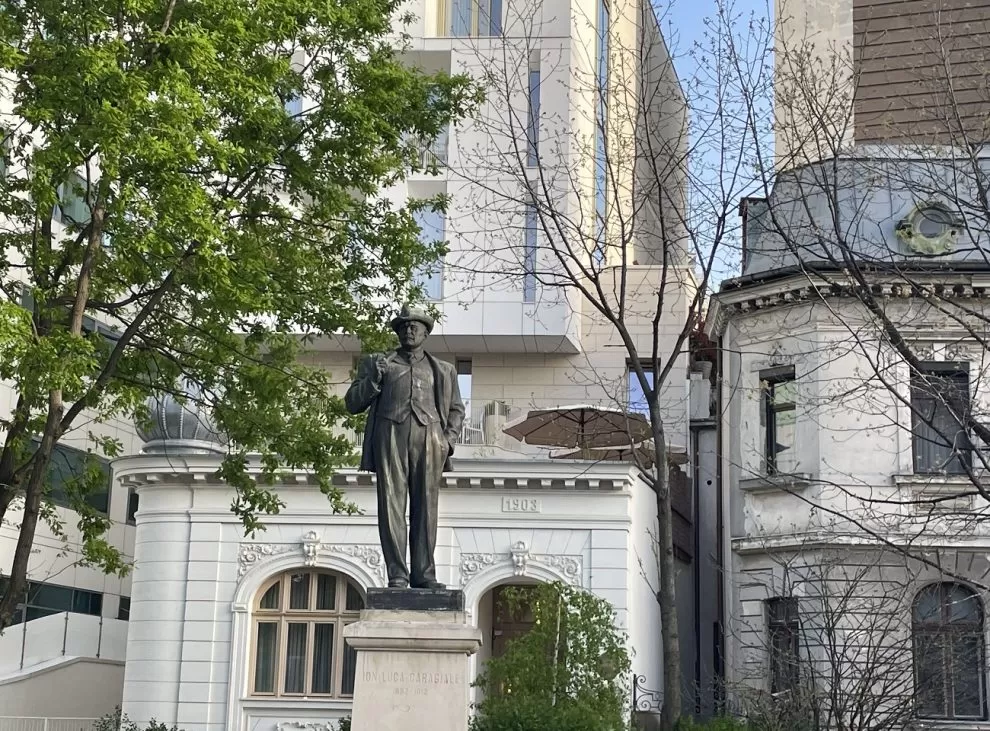
Monumental art – Caragiale, by Constantin Baraschi
One of the best-known statues of the playwright Ion Luca Caragiale was created by Constantin Baraschi and is located in the center of Bucharest.
It was originally installed in 1993 on Maria Rosetti Street, near the intersection with the street named after the playwright.
On the occasion of the 150th anniversary of the National Theater, in 2002, the work of art was moved – without approval – in front of the institution, where it remained for four years, returning to its place, and on the green space in front of the TNB was placed “Căruța cu paiațe”, by Ioan Bolborea.
Made in 1957, the statue of Caragiale commissioned by the State did not find a place and was abandoned. Writer Marin Preda retrieved it and brought it to the courtyard of the Cartea Românească publishing house, which he ran as director. After 1990, it was taken over by the City Hall and installed in Maria Rosetti Street.
Constantin Baraschi (1902, Câmpulung Muscel – 1966, Bucharest) studied art in Bucharest and Paris, and in 1927 he exhibited at the Salon Officiel. At the age of 29, he was awarded the Grand Prix at the International Exhibition in Barcelona, and in 1937, he was a gold medalist at the International Exhibition in Paris, among others. He was a member of several artistic associations and a corresponding member of the Romanian Academy since 1955.
His public works include bas-reliefs realized in 1938 for the Arch of Triumph in Bucharest, the Modura Fountain – Aleea Cariatidelor in Herăstrău Park (demolished and rebuilt in 2006, bronze), the statue of Nicolae Bălcescu unveiled in 1969 in Pitești, and two bas-reliefs for the facade of the Botanical Institute in the Capital. He contributed details to the iconostasis of the Cașin Church, and is the author of the busts of Nicolae Bălcescu, Alexandru Sahia and George Coșbuc in Carol I Park. Also in Bucharest, on Calea Dorobanți, is the Zodiac apartment block, built in the inter-war period and declared a historical monument. It bears this name thanks to the 16 decorative panels with astrological themes by Constantin Baraschi.
Constantin Baraschi was rector at the Institute of Fine Arts in Bucharest and the only Romanian sculptor to have written a treatise on sculpture (“Treatise on Sculpture”, two volumes, Meridiane Publishing House 1962, second edition in 1964).
His sculpture is under the sign of an academic realism that responded to the official taste both in the inter-war years and in the Stalinist period. He preferred bronze and marble. In the 1930s he sculpted female nudes and graceful female portraits paraphrasing Renaissance portraits.
“The controversy surrounding the statue of Eminescu he made, triggered by Dan Hăulică’s article in 1965, which involved a large number of artists and people of culture, was the signal of the official abandonment of socialist realism”, according to monumentfor.ro.
Works by him rarely appear at auction. Most recently at Artmark this spring, the bronze ‘Torso’ (1930 – 1935) fetched €13,000. A version of the sculpture is in the collection of Romania’s National Art Museum.





